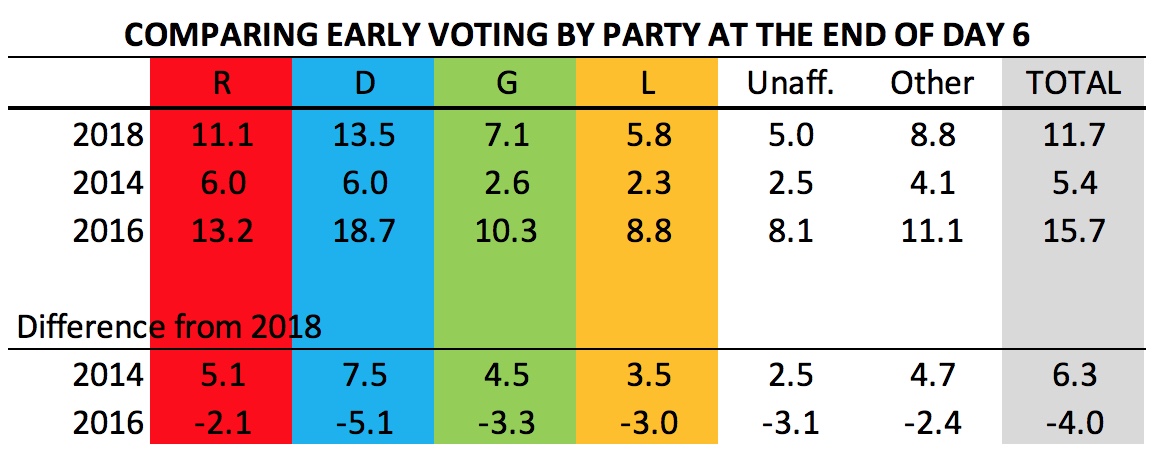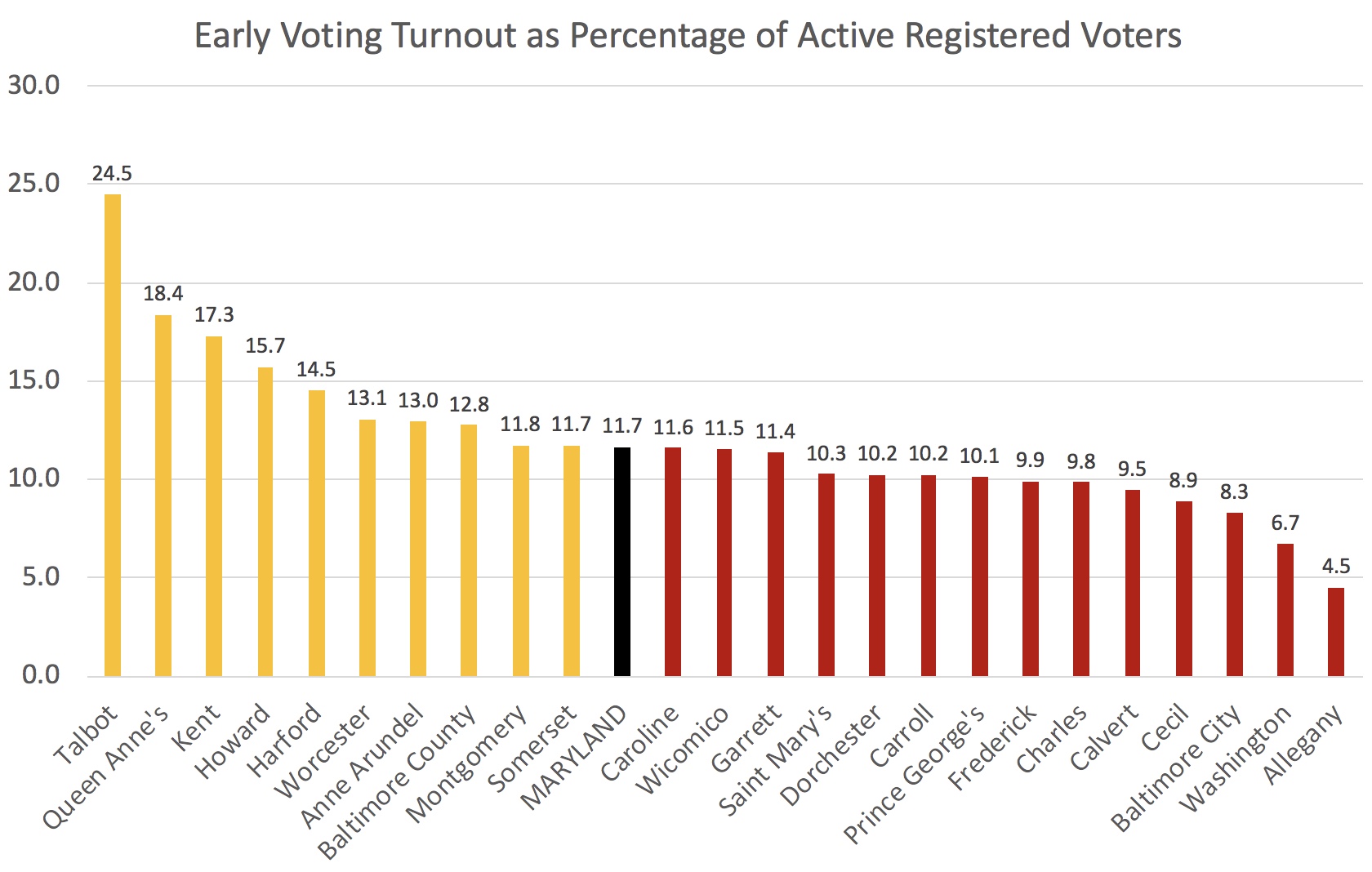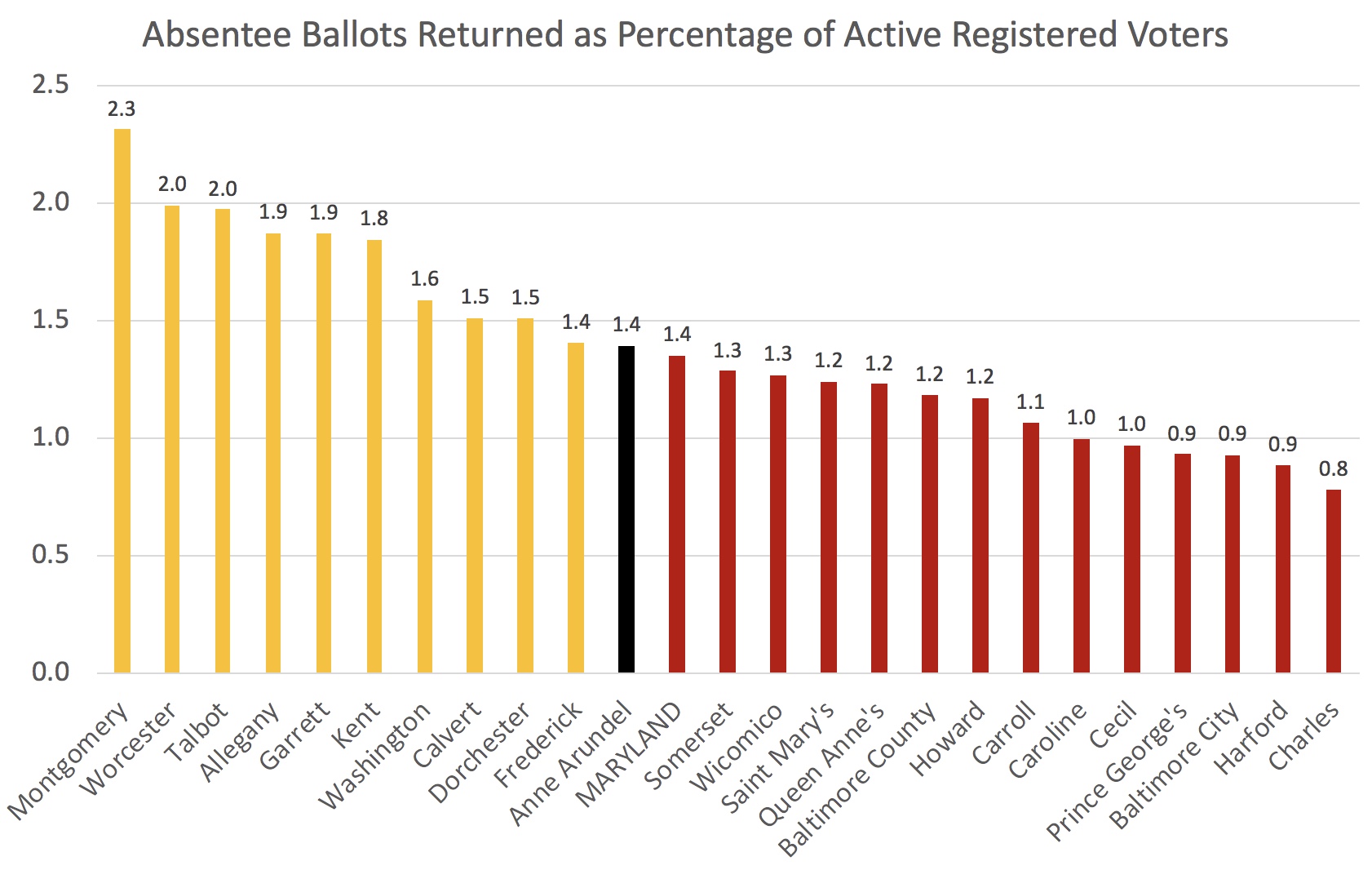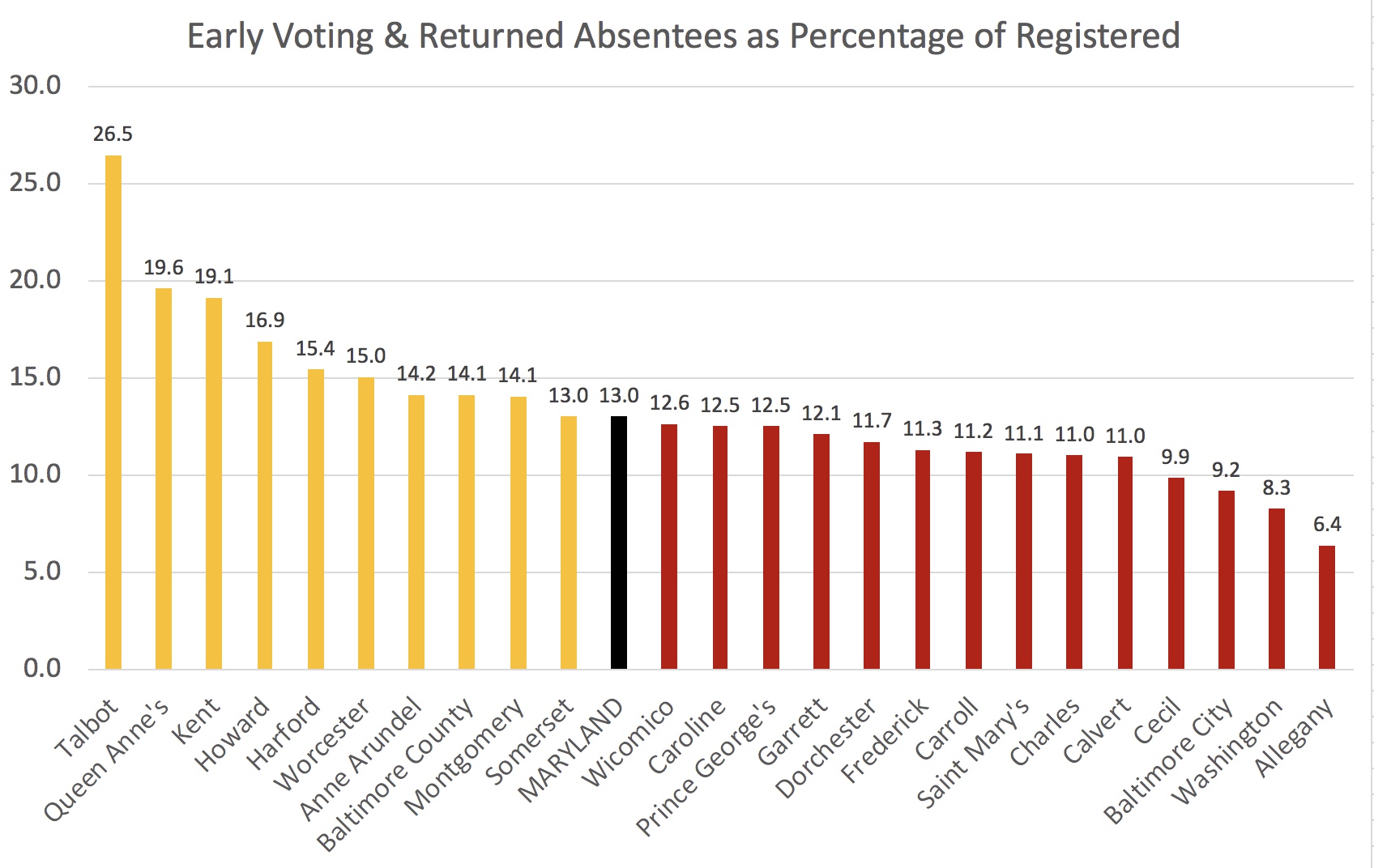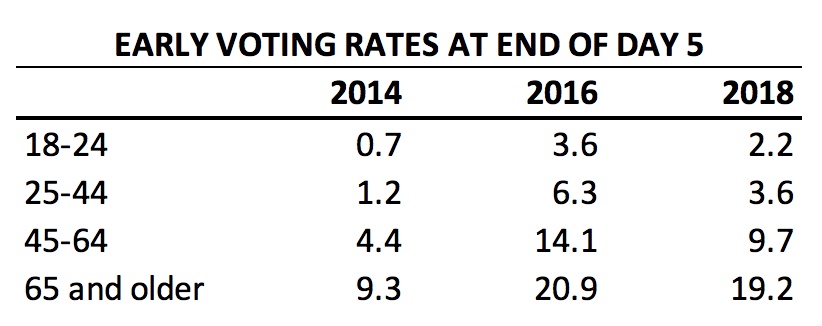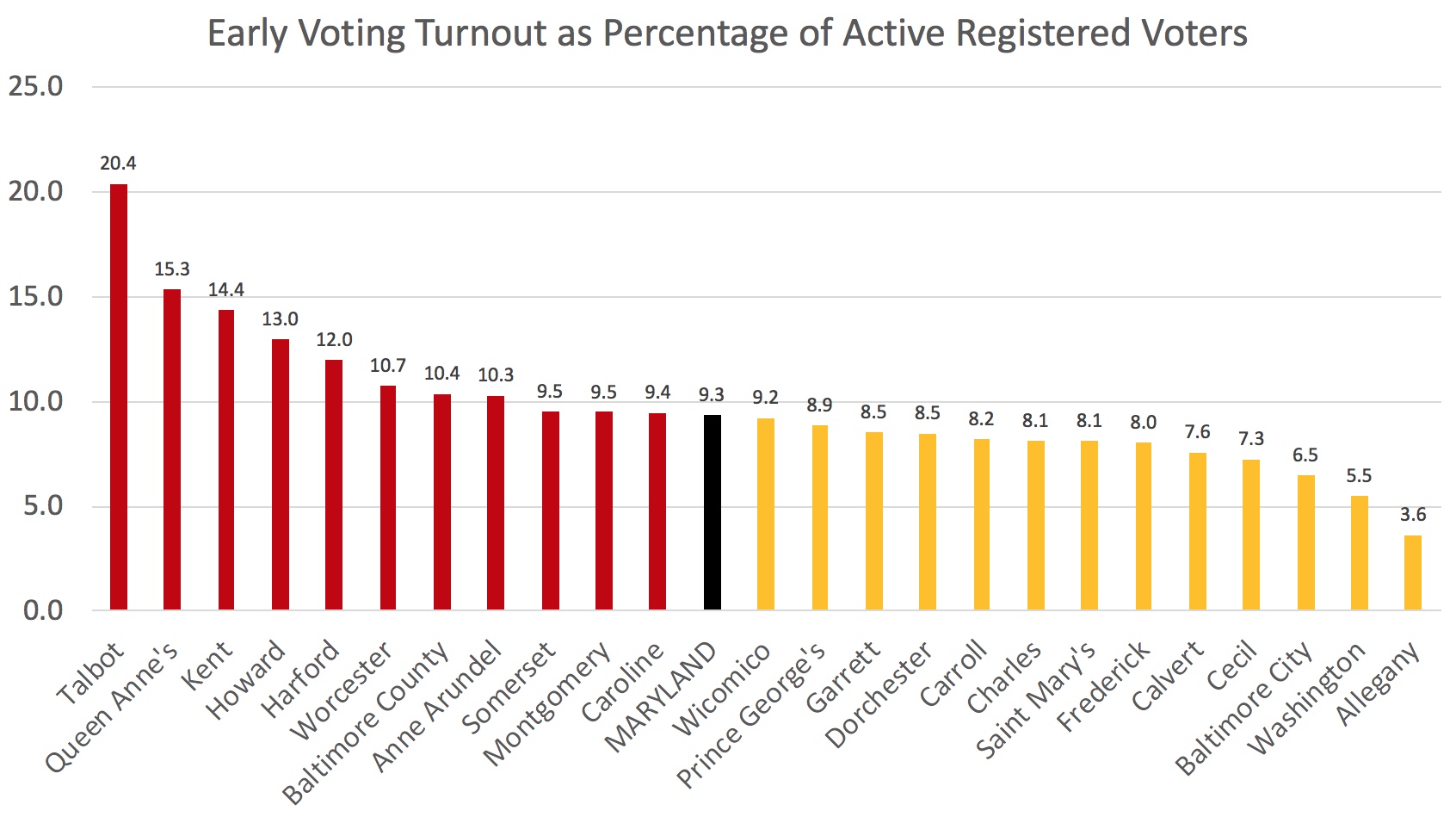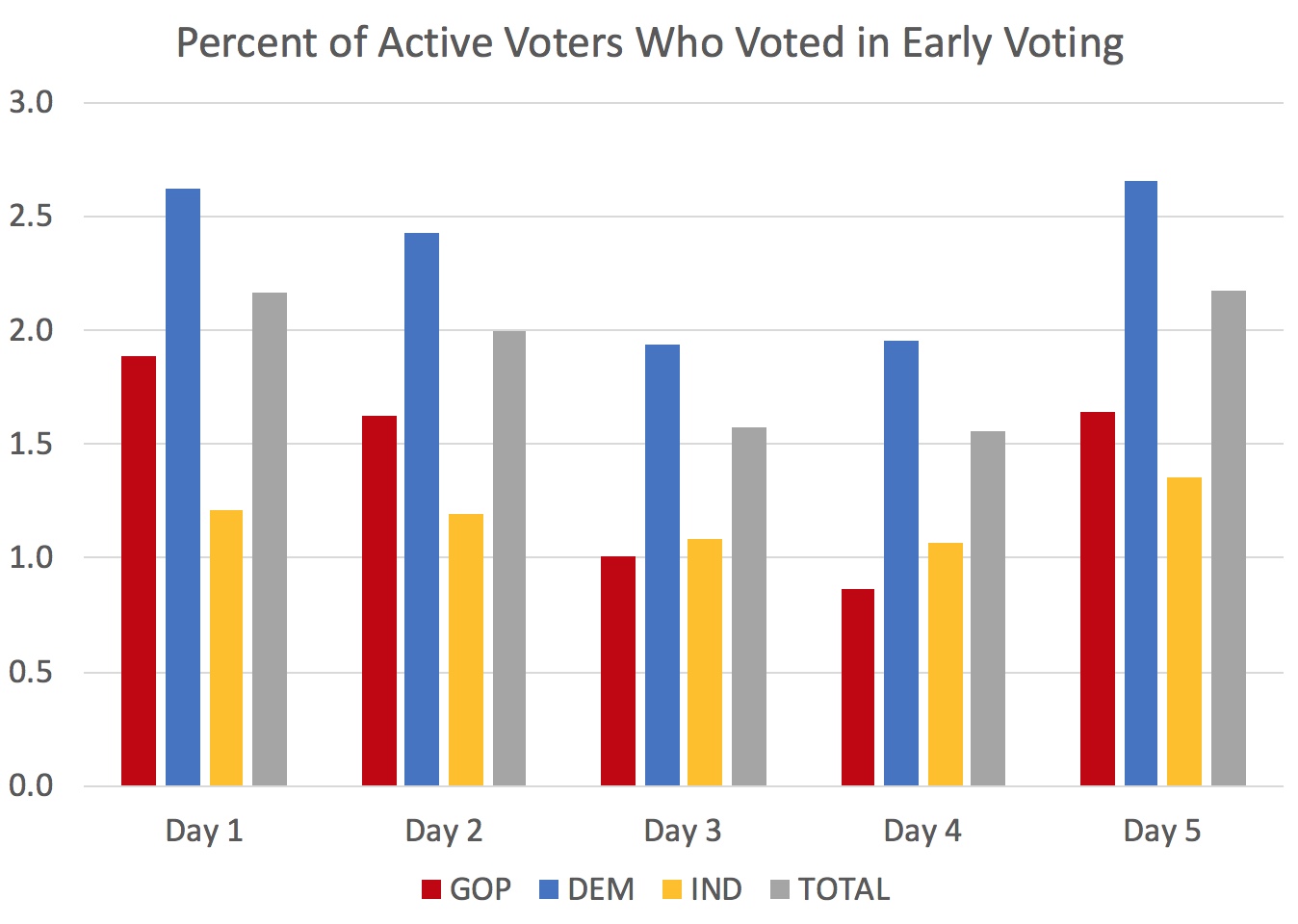I’ve been covering who has been turning out in early voting heavily the past few days. There is little evidence of a wave of young voters turning out that will carry the Democrats to victory. At the same time, the electorate looks much improved for Democrats from 2014 even if it is not showing signs of being as favorable to them as the 2016 presidential electorate.
Of course, we won’t know the complete picture about how turnout has changed from either 2014 or 2016 until all the votes have been cast. But it seems important to take a moment to pause from statistics to consider when and how turnout dynamics matter.
Turnout Won’t Matter in the Governor’s Race
Based on the polls, Ben Jealous is in dire trouble. In a future post, I hope to explore why Jealous is flailing despite Maryland’s favorable demographics that should be even more favorable due to shifts in voting behavior unleashed by Trump in a future post. In a nutshell, he losing far too much of the Democratic base.
Anthony Brown fared poorly among white voters four years ago. Ben Jealous looks set to do even worse even as Democrats elsewhere look poised to make substantial gains among highly educated women. Equally problematic, he is hemorrhaging support among nonwhite voters.
Even the most favorable Democratic turnout wind cannot save Jealous from these fundamental problems. They could help close the gap with Hogan but that would merely serve to make his loss somewhat more respectable. But there is no way that Jealous can win the election if he loses roughly 30% of Democratic voters as polls currently indicate.
Who Votes Matters More Down Ballot
Republicans are hoping that there will be a Larry Hogan wave that gives them enough seats in the General Assembly to uphold his veto in at least one house. They’ve focused particularly hard pm the Senate in their “drive for five.”
Except to my surprise in our polarized era, voters seem quite inclined to split their tickets. The same polls that show Larry Hogan receiving a vote share in the high 50s reveal similar proportions wanting Democrats to control the legislature.
In 2014, the Republicans picked up the low hanging fruit in several districts that had long leaned more Republican in national elections and became even more so with Trumpian populism. But there were simply enormous gaps in support for Hogan and Republican legislative candidates elsewhere.
That pattern could easily appear again in 2018. Gov. Hogan has framed this election as a vote to maintain what he presents as our much improved status quo and that he works well with the legislature. That’s hardly an argument to throw out Democrats in the General Assembly.
Republicans are hoping that better candidates and huge financial investments will change this dynamic. But Democrats who defect for Hogan may not be so quick to do so when presented with different candidates. Democrats who think Hogan is fine or Jealous has too many unrealistically expensive plans will often find their local Democratic candidate better attuned to their patch and deem the Republican too right wing.
In Senate races with Democratic incumbents fighting a tough battle for reelection, such as Ron Young in Frederick or Kathy Klausmeier in Baltimore County, a more favorable electorate could provide them with a crucial cushion.
It could also make a difference in the many exciting county executive races and help, for example, carry Johnny Oleszewski into office in Baltimore County. The races in Howard and Anne Arundel have also tightened, though it’s unclear how much. If Democratic challengers can get within a few points, a more favorable electorate could open the door to an upset. It won’t be enough to overcome a spread that looks more like 55-45.
In short, this year, turnout dynamics look likely to have the potential to play a crucial difference around the margins but the candidates have to get close enough for the margin to make a difference.

